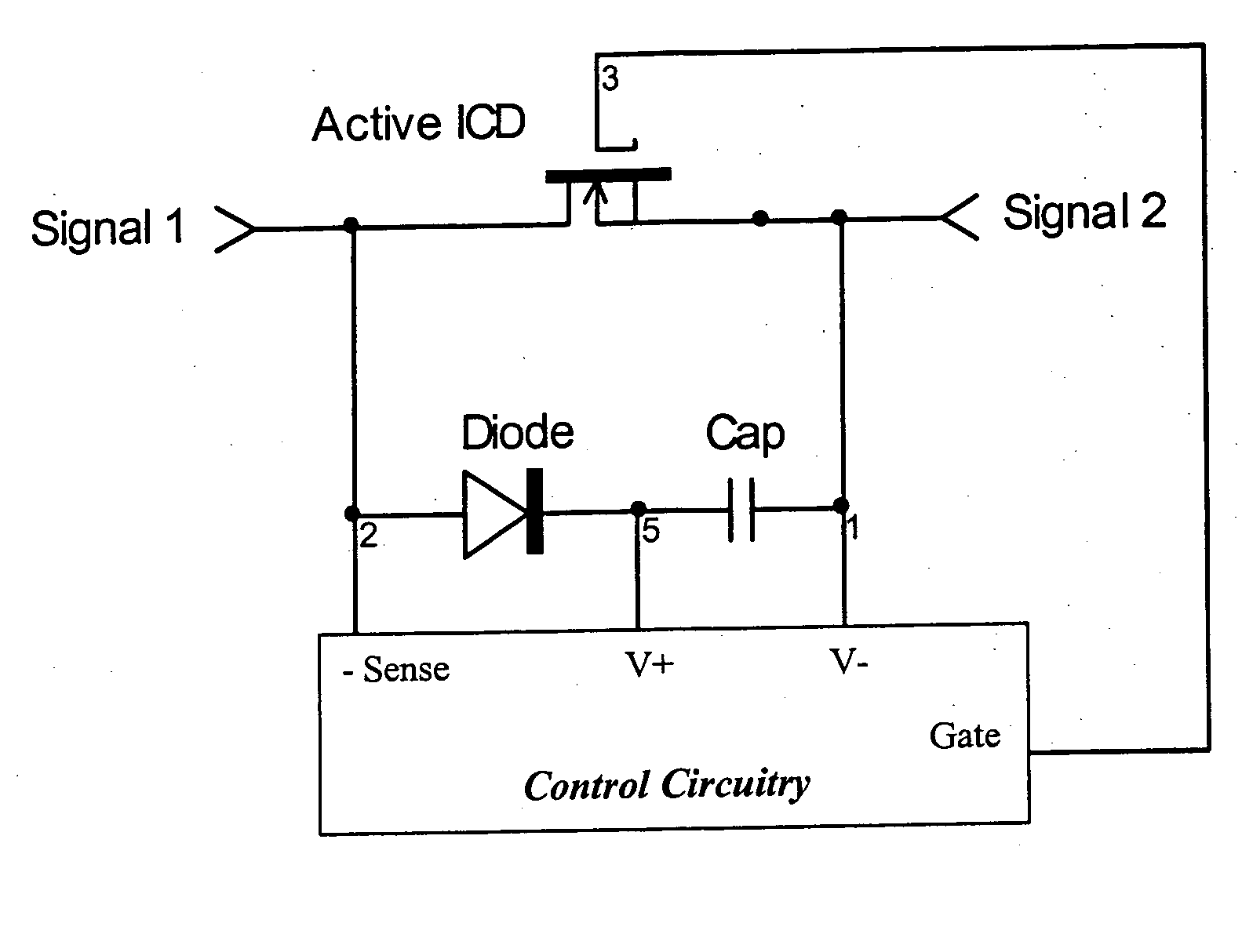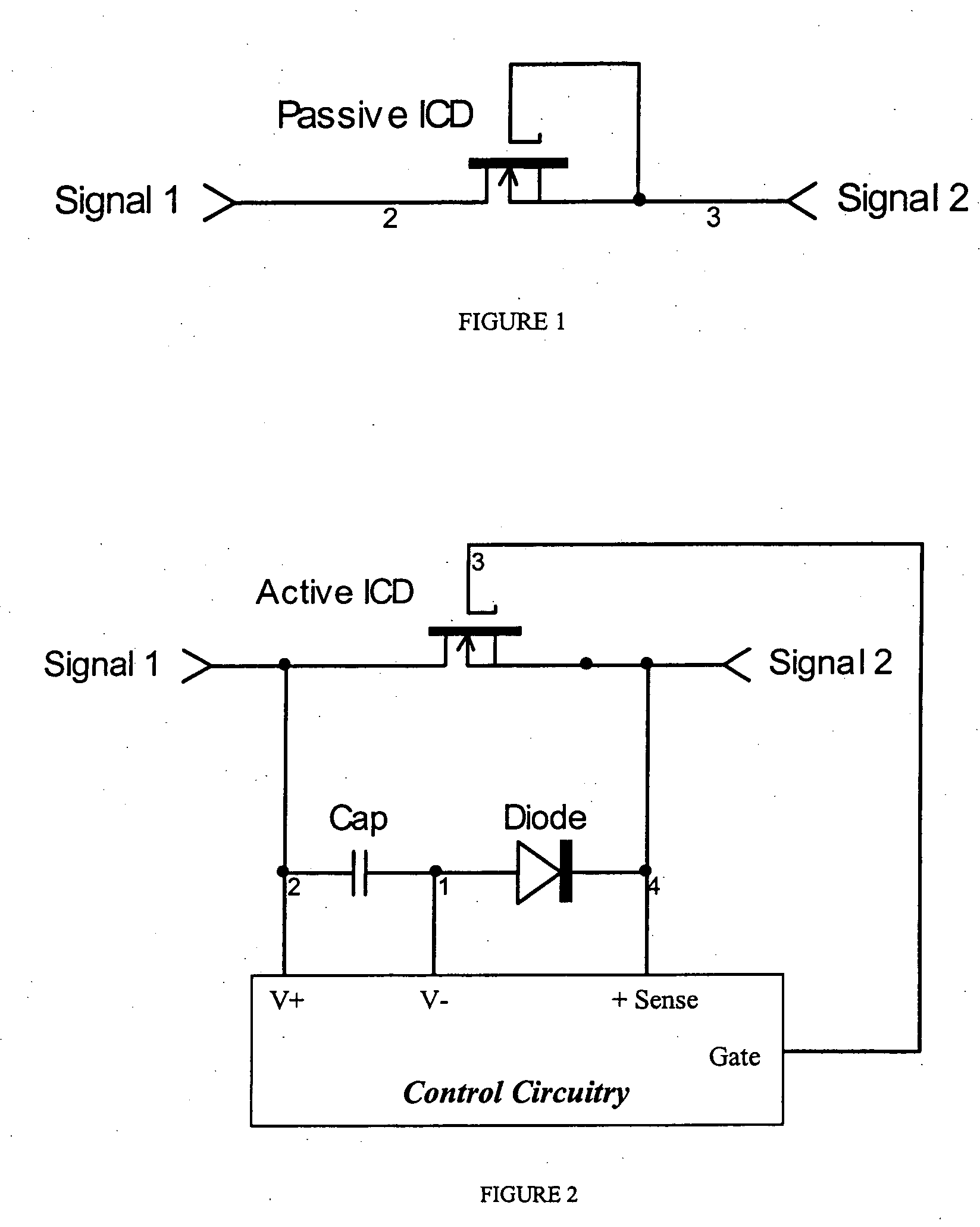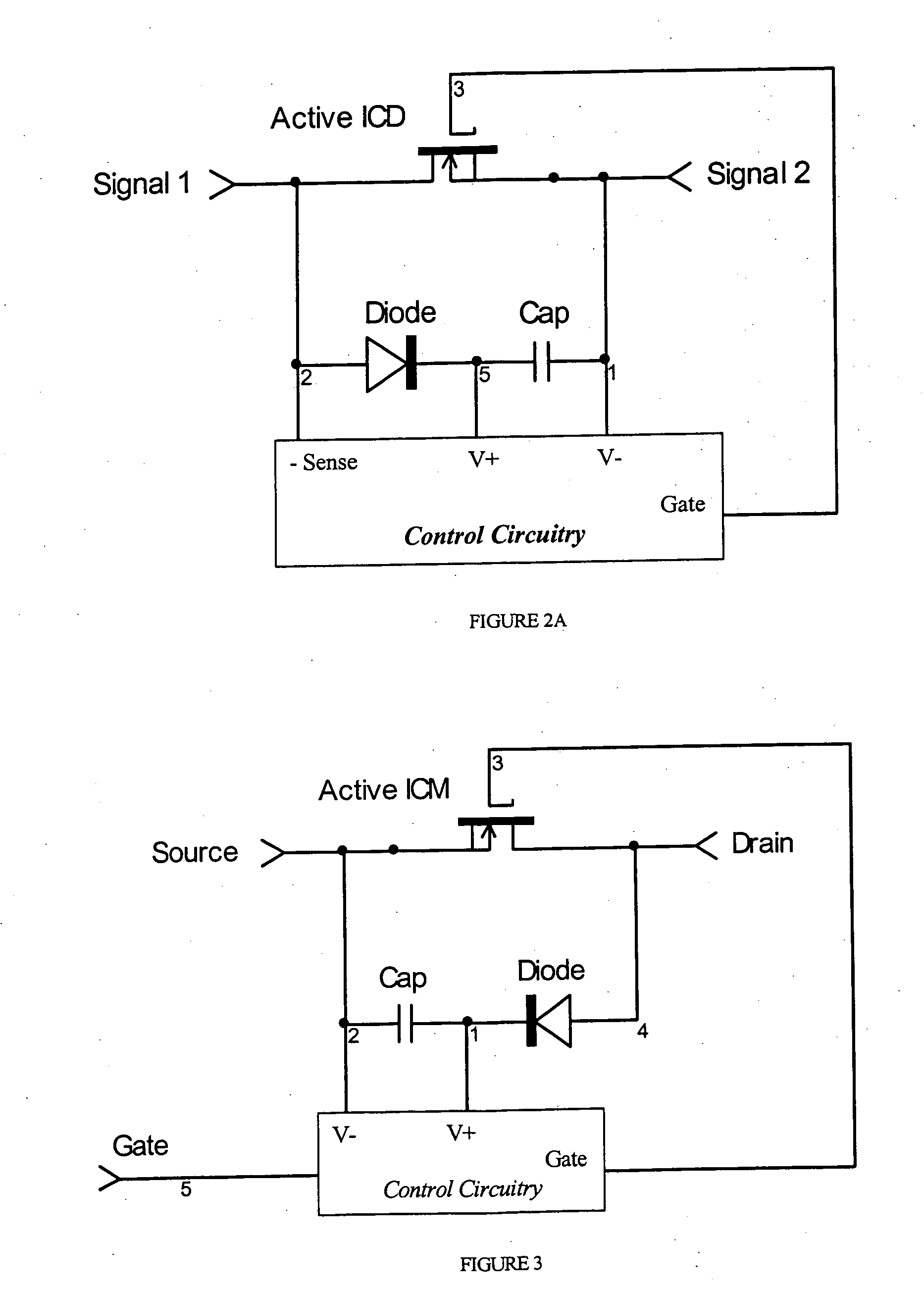On chip power supply
a technology of integrated circuit and power supply, which is applied in the direction of electronic switching, pulse technique, instruments, etc., can solve the problems of requiring careful timing control, reducing the attractiveness reducing the efficiency of external power utilization, so as to achieve a more conductive “, reduce leakage, and improve the effect of gate driv
- Summary
- Abstract
- Description
- Claims
- Application Information
AI Technical Summary
Benefits of technology
Problems solved by technology
Method used
Image
Examples
Embodiment Construction
[0026] Referring to FIG. 1, a prior art schematic diagram of an ICD (integrated circuit diode) is presented. This device acts as a low forward voltage diode because of the gate connections, and the depletion threshold voltage. It is specifically designed to handle alternating polarities. It is obvious that the addition of an external power supply and control logic would greatly enhance the functionality of this device by allowing the gate to be driven well above the drain potential when conducting.
[0027] The device shown in FIG. 1 is an n-channel device. Normally, in a conventional field effect device, the body or backgate is connected to the source of the charge carriers when the device is turned on. In that regard, the source and drain labels, as used herein refer to the source being that region which is the source of the charge carriers when the device is turned on or conducting, and with the drain being the other region of the same conductivity type. Therefore, the charge carri...
PUM
 Login to View More
Login to View More Abstract
Description
Claims
Application Information
 Login to View More
Login to View More - R&D
- Intellectual Property
- Life Sciences
- Materials
- Tech Scout
- Unparalleled Data Quality
- Higher Quality Content
- 60% Fewer Hallucinations
Browse by: Latest US Patents, China's latest patents, Technical Efficacy Thesaurus, Application Domain, Technology Topic, Popular Technical Reports.
© 2025 PatSnap. All rights reserved.Legal|Privacy policy|Modern Slavery Act Transparency Statement|Sitemap|About US| Contact US: help@patsnap.com



